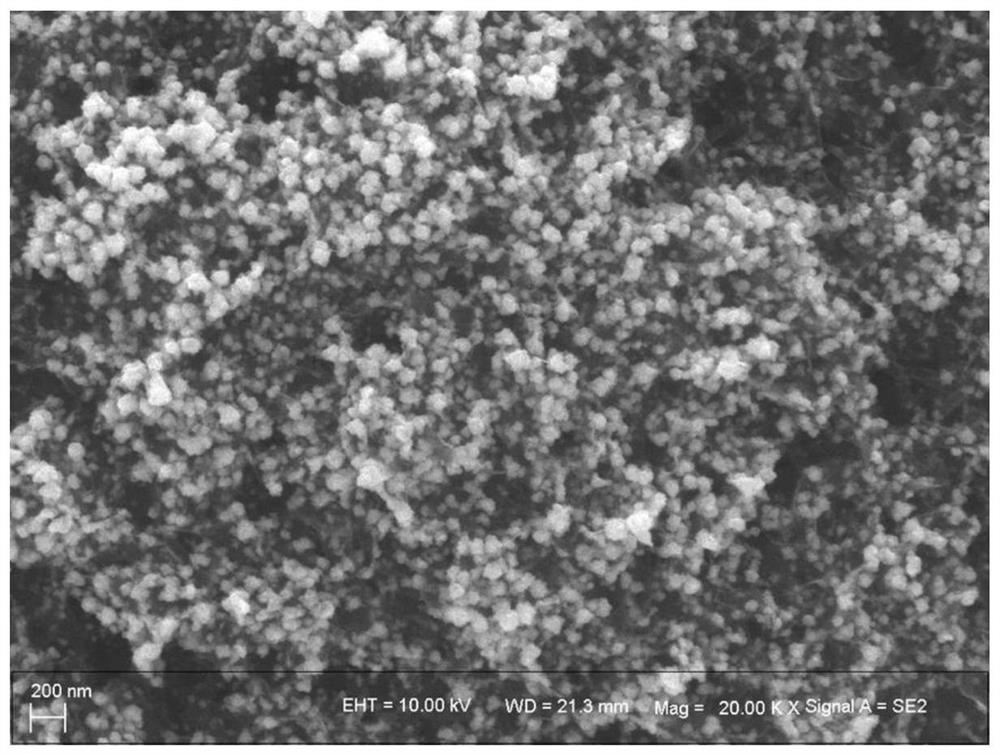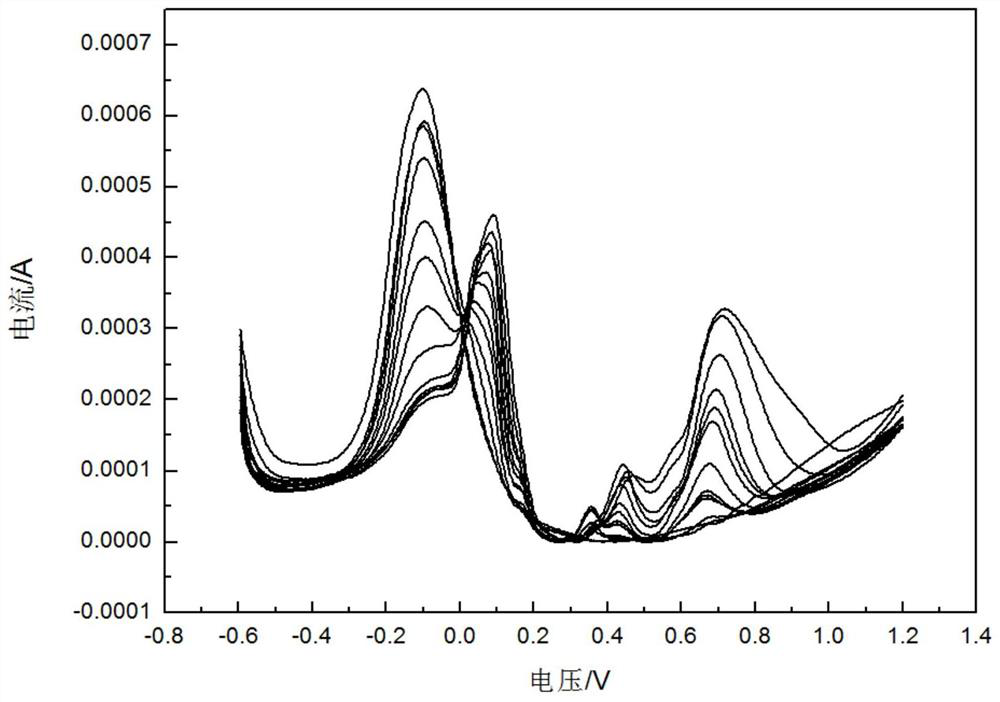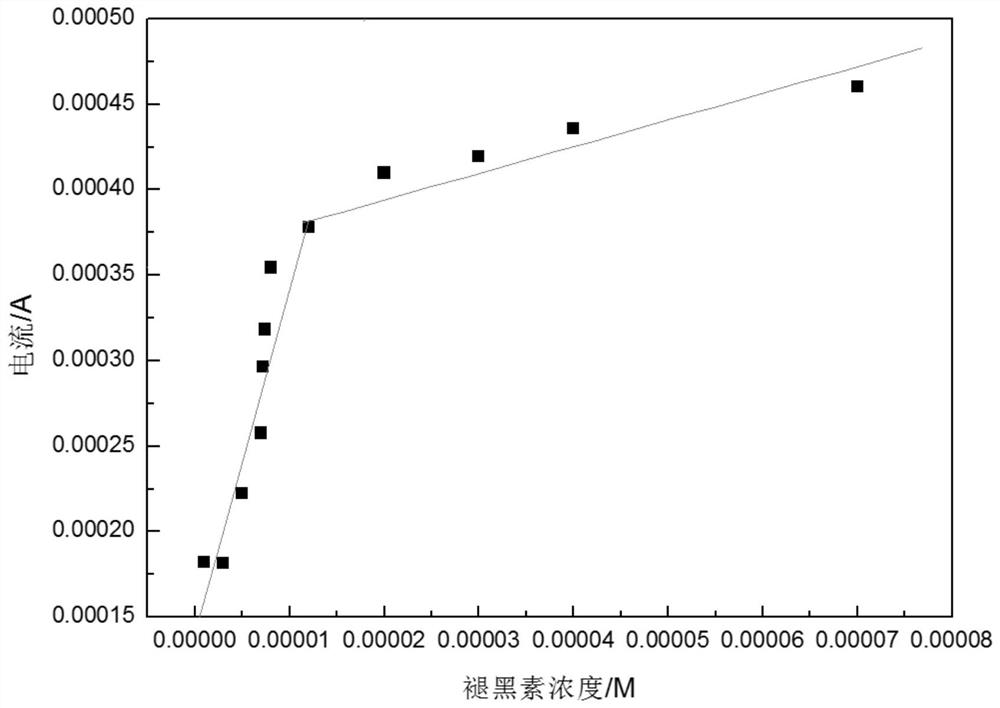cuo-polylysine/graphene electrode and its preparation method and application
A technology of polylysine and graphene, applied in the direction of material electrochemical variables, material analysis through electromagnetic means, instruments, etc., can solve the problems of immature melatonin and pyridoxine, etc., to achieve the benefit of civilian use, The production process is simple and the detection limit is low
- Summary
- Abstract
- Description
- Claims
- Application Information
AI Technical Summary
Problems solved by technology
Method used
Image
Examples
Embodiment 1
[0067] A preparation method of CuO-polylysine / graphene / substrate electrode, comprising the following steps:
[0068] 1) Prepare graphene / substrate electrodes, including ①~③, as follows:
[0069] ① Grind the 2×1×0.1 (length×width×thickness, cm) substrate with sandpaper to remove the oxide on the surface of the substrate, cleaning: Ultrasonic cleaning in the order of ultrapure water-ethanol-ultrapure water for 5 minutes each , drying with an infrared lamp, wherein the substrate is a tantalum sheet;
[0070] ② Drop 200 μL of Ni(NO 3 ) 2 ethanol solution, and baked under infrared light for 2 minutes for drying, wherein, Ni(NO 3 ) 2 Ethanol solution is composed of ethanol and Ni(NO 3 ) 2 ·6H 2 O is uniformly mixed, Ni(NO 3 ) 2 Ni(NO 3 ) 2 ·6H 2 The concentration of O is 0.6M.
[0071] ③ Perform DC plasma jet chemical vapor deposition on the substrate obtained in step ②: polish the reaction chamber and sample stage (Mo stage) of the DC plasma jet chemical vapor depositi...
Embodiment 2
[0087] CuO-polylysine / graphene / substrate electrode to detect melatonin alone:
[0088] a) Prepare multiple modeling solutions, each of which is a PBS buffer solution mixed with melatonin, the concentration of melatonin in multiple modeling solutions is different, CuO-polylysine in Example 1 The three-electrode system composed of / graphene / substrate electrode, reference electrode and counter electrode was respectively inserted into the modeling solution, and the current-voltage curve of each modeling solution was obtained by differential pulse voltammetry (DPV), as shown in Figure 5 As shown, among them, the potential of differential pulse voltammetry is set to -0.6 ~ 1.2V; the reference electrode is a saturated calomel electrode, and the counter electrode is a platinum sheet electrode.
[0089] b) Current-voltage curves for each modeled solution:
[0090] For the modeling solution containing melatonin: the potential corresponding to the peak at 0-0.2V is used as a qualitativ...
Embodiment 3
[0099] CuO-polylysine / graphene / substrate electrode for the detection of pyridoxine alone:
[0100] a) Prepare multiple modeling solutions, each of which is a PBS buffer solution mixed with pyridoxine, and the concentrations of pyridoxine in multiple modeling solutions are different. CuO-polylysine in Example 1 The three-electrode system composed of / graphene / substrate electrode, reference electrode and counter electrode was respectively inserted into the modeling solution, and the current-voltage curve of each modeling solution was obtained by differential pulse voltammetry (DPV), as shown in Figure 7 As shown, among them, the potential of differential pulse voltammetry is set to -0.6 ~ 1.2V; the reference electrode is a saturated calomel electrode, and the counter electrode is a platinum sheet electrode.
[0101] b) Current-voltage curves for each modeled solution:
[0102] For pyridoxine: the potential corresponding to the peak at 0.6-0.8V is used as a qualitative index, a...
PUM
 Login to View More
Login to View More Abstract
Description
Claims
Application Information
 Login to View More
Login to View More - R&D
- Intellectual Property
- Life Sciences
- Materials
- Tech Scout
- Unparalleled Data Quality
- Higher Quality Content
- 60% Fewer Hallucinations
Browse by: Latest US Patents, China's latest patents, Technical Efficacy Thesaurus, Application Domain, Technology Topic, Popular Technical Reports.
© 2025 PatSnap. All rights reserved.Legal|Privacy policy|Modern Slavery Act Transparency Statement|Sitemap|About US| Contact US: help@patsnap.com



